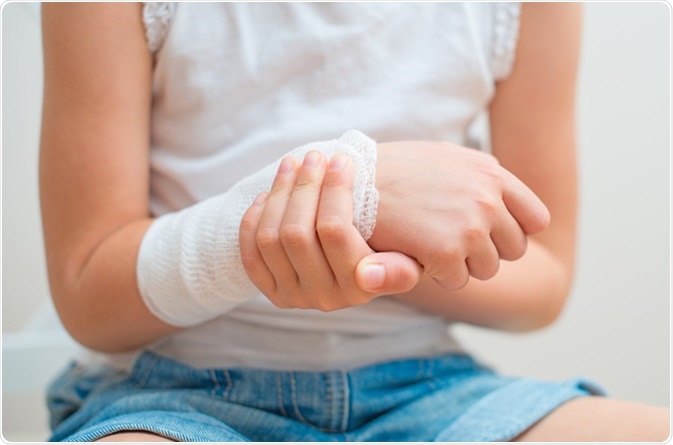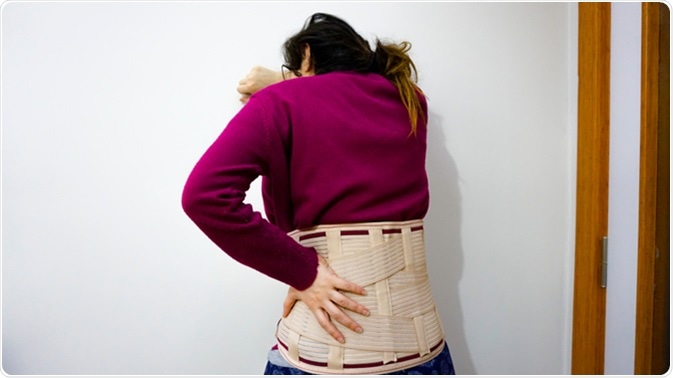Elastic compression garments (CG) are used for a variety of purposes in the medical and cosmetic surgical fields today. There are several types and designs, made from a range of materials, to suit differing demands. Some indications include boosting the circulation, shaping body contours, preventing low blood pressure, and supporting recovery of tissue after a medical procedure.
Compression Garments over the Extremities
The most commonly seen type of compression dressing is the pressure type bandage, such as the ACE wrap. These must be used correctly to produce the intended effect. They are usually applied over the extremities, as for low blood pressure and in varicose veins, and therefore cannot be used following an abdominoplasty or lipectomy.
Tubular compression dressings are used to apply compression over a limb without having to rewind the bandage each time it is reapplied.
These bandages must be put on first thing in the morning, before putting one’s feet on the ground. They are worn continuously the whole day, and removed just before going to bed. Their advantages include ease of application, flexibility and accommodation to the shape of the leg, and change in shape with walking. However, they may be uncomfortable when the patient is at rest. Lying down for long periods with elastic bandages over the legs may cause the capillaries to be obstructed resulting in tissue death.
This is because they have a high resting pressure which exerts adequate compression on the superficial veins of the legs when the limb is working, but may exceed the acceptable limits at rest. They are applied in layers overlapping by 50% with each turn, starting just above the toes or fingers and extending over the arm.
Custom-made CGs are now made for specialized uses, such as to compress large and active or highly visible burn scars. They need to be replaced regularly if used in growing children, to maintain effective compression while avoiding excessive pressure. Their duration of use in burns scars is at least six months in adults, but as long as 18-24 months on average in children. However, their use may be prolonged if the scar begins to itch after the garment is not used for a few days, because this indicates the scar has still not regressed.

Image Credit: Dmitri Ma / Shutterstock
CGs Following Abdominal Surgeries
Abdominoplasty and abdominal lipectomy both require elevated pressure to force out the serum collected under the skin in the cavity left by the removal of fat from the abdomen, through the small incisions which are left open. Once drainage stops through these holes, the CG is worn for one day more and then removed. Different types of garment are available:
- Girdles which cover the abdomen and thighs to varying levels, above or below the knee
- Body shapers for full body compression over the trunk
- Girdles especially designed to provide compression following fat transfer to the buttocks
- Abdominal supporters to keep the abdomen supported during the recovery period
- Abdominal binders in one piece or several panels which can be adjusted to provide compression over the abdomen following surgery

Woman with girdle for back pain. Image Credit: Akin Ozcan / Shutterstock
Other Types
Various other CGs are in use following other types of surgery or injury, such as:
- Arm sleeves and gloves/gauntlets for scars on the upper extremity
- Compressive bras following breast reconstructive or cosmetic surgery
- Facial bandages and bands for facial compression following facial cosmetic surgery such as a facelift, a chin lift, or wrinkle removal
Materials
Most CG are knits, either warp knit or weft knit. The knitting technique itself may be circular or flat. Flat warp knit materials exert more pressure and can be made into tighter curves, without coming unraveled. Thicker yarn can be used which makes for a more elastic fabric. Seams become necessary because the resulting material is stitched into shape. Custom-made garments are made for each patient.
Circular knit produces a continuous tubular fabric without seams, but it is difficult to build in tight curves.
Polyamide (nylon) and elastane (Spandex) are the most frequently used fibers for making CG, because they are stretchable, strong, durable and soft. Elastane is always used as a small percentage of the fabric composition to ensure that the CG is comfortable.
Further Reading